Straw Bale Vs. Cob House – What Is The Better Build?

Have you ever dreamed of loving off the grid in a house that was actually good for the environment?
If you have then you’re certainly not alone. Alternative home construction methods are on the rise these days as people are looking to negate the obvious negative impact we are having on the Earth.
And as we movie on into a hopefully greener future, people are looking to the past. The fact is that people were a lot more knowledgeable about building homes out of eco-friendly materials in centuries past and we can learn a lot from them.
Cob and straw bale houses are prime examples that are experiencing a resurgence as of late but which one is the better build. We help you sort through the pros, cons and merits of each in the following article.
Overview Of The Two Construction Styles
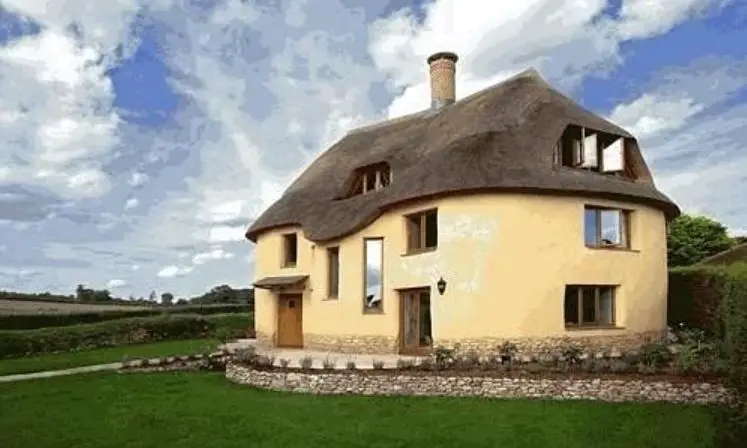
Cob houses have been around for a very long time.
The earliest confirmed record of cob construction dates back to 13th century England when many people were using this construction method because other building materials like wood were scarce and hard to transport.
However, it is believed that cob construction was borne of an even older construction style called wattle and dob. Wattle and dob walls date back to at least 10,000 years ago.
The history of straw bale homes may not stretch back as far as cob construction but it is nonetheless storied.
The first recorded instance of straw bale construction in America dates back to 1896 when a schoolhouse in Nebraska was constructed of straw bales.
The style of construction lost popularity by the turn of the 20th Century due to the advent of sturdier materials and easier transportation of them.
However different their histories may be, straw bale and cob construction share one very distinct feature that endears them to modern people: they are both eco-friendly methods of home construction.
Cob Construction

Cob construction utilizes sub-soil materials as the main component for walls.
The material is usually made from earth, straw, sand and perhaps some varying concentration of clay.
The material is not formed into bricks like adobe but immediately packed and formed into the shape of walls for the home or structure.
Straw Bale Construction
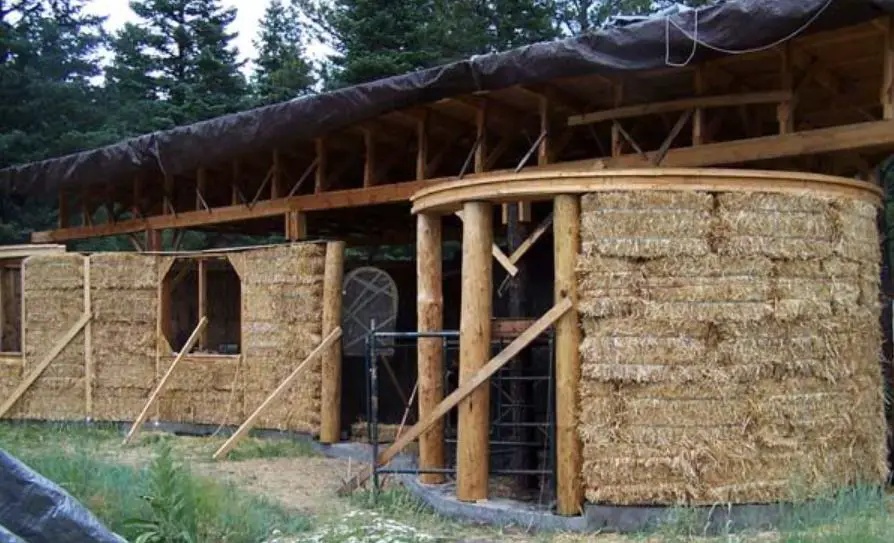
Straw bale construction is exactly what it sounds like: homes built out of straw bales.
The straw bales more or less act as bricks. They are stacked on top of one another to form walls or are used to fill wooden frames to act more as a reinforcement or insulation for the structure.
Quick Comparison
Straw Bale |
Cob |
|
Insulation |
Provides decent insulation |
Typically provides better insulation |
Cost |
May be pricey if a contractor is hired |
Typically affordable due to the small size |
Durability |
Some durability issues |
Generally more durable than straw bale |
Why Might You Choose A Straw Bale House Over A Cob House?

- Easy to Build – Compared to cob construction straw bale homes are simpler to design and build.
- Faster Construction – Since cob homes are made of wet and dry materials, they have to cure which takes time. Straw homes don’t have to dry or cure, cutting down on construction time.
- Uses Waste Material – Some people consider straw bale homes fore sustainable because they are made from the part of natural grain that would otherwise be thrown away.
- Earthquake Resistant – Straw bale homes aren’t as rigid and unyielding as cob homes so they tend to stand up to earthquakes better.
- Thick Walls – Straw bale homes generally have very thick walls which could be good for sound insulation and wind resistance.
Why Might You Choose A Cob House Over A Straw Bale House?
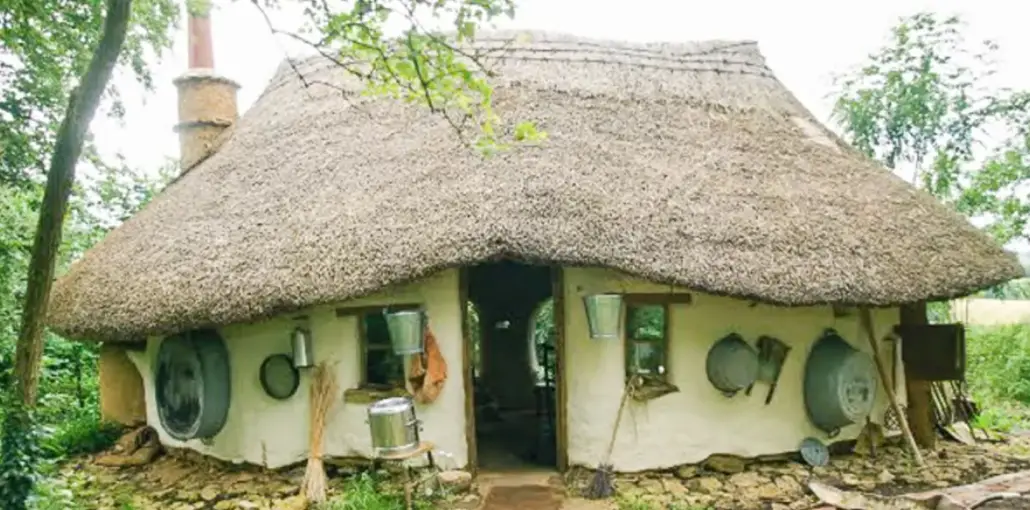
- Durability – Because of the denseness of cob wall houses, they tend to be more durable than straw bale homes.
- Fire Resistance – The earth, clay and sand that cob walls are typically comprised of are flame-retardant unlike straw.
- Good Thermal Mass – Cob walls are similar to packed earth and natural stone walls. They retain heat during the day that is released at night.
- Region – You might choose a cob house over a straw bale house if you live in a particularly rainy region of the country because cob houses stand up to moisture better.
- Longevity – Cob houses aren’t as susceptible to pest and insect damage as straw bale homes. The walls are also more rigid which in general will equal a longer-lasting home.
Hybrid Straw Bale/Cob Houses & Their Merits
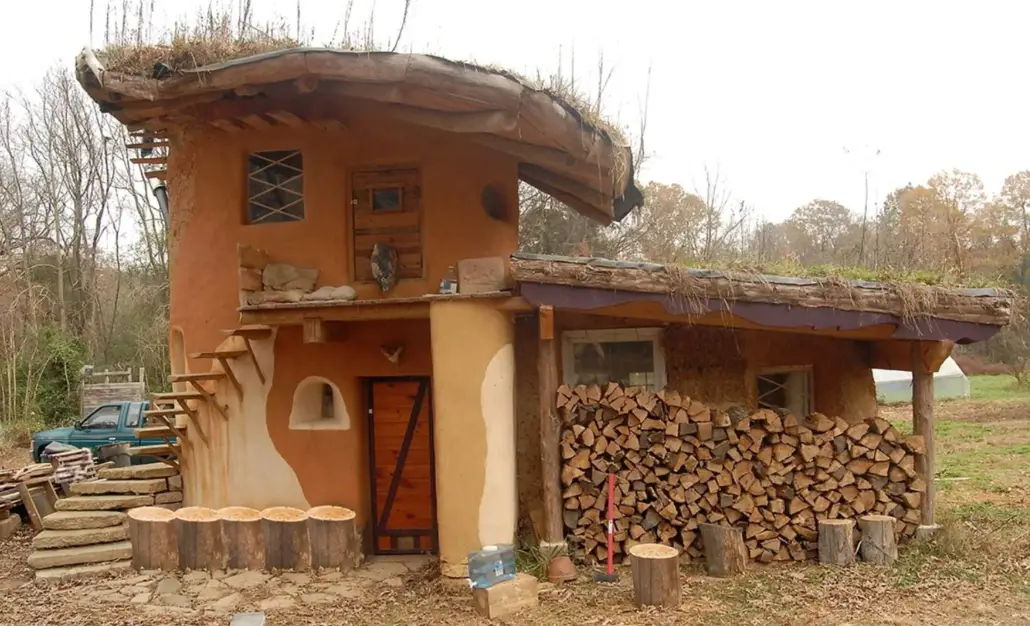
Some industrious builders have cleverly combined the attributes of cob and straw bale construction to build what has been coined hybrid homes or balecob homes.
It’s an infill technique that uses straw bales and cob foundations or “beads” to support the walls.
This type of housing essentially supplements in areas where the individual materials are lacking. For instance, balecob walls can be load-bearing walls whereas straw bales alone aren’t suitable for loads.
Hybrid houses are also quicker to build because not as much curing is needed as opposed to a strictly cob-constructed structure.
Straw Bale Construction Pros & Cons
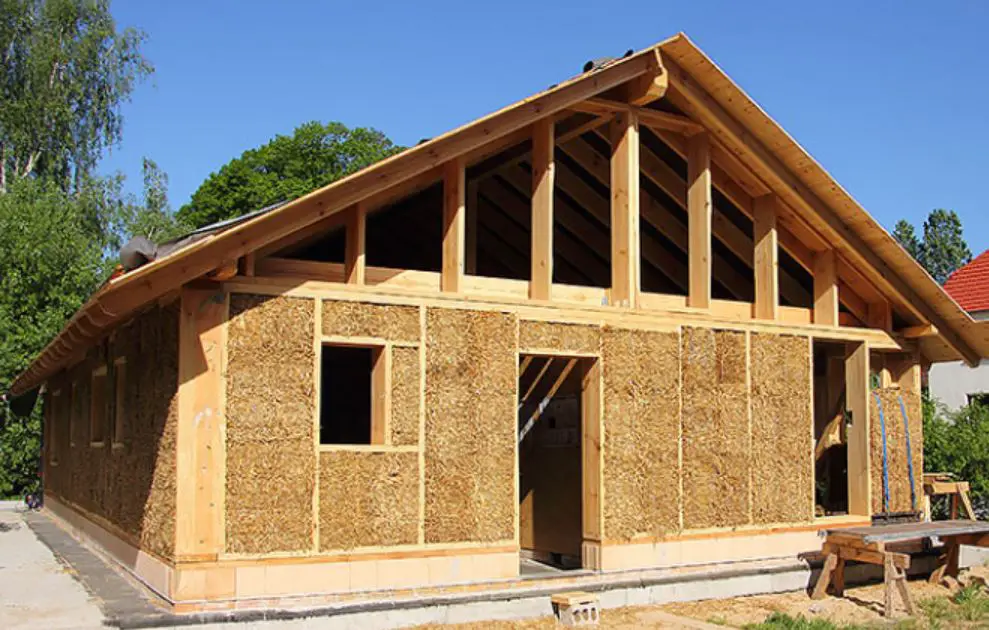
Pros:
- Quicker to build
- The family can join you in parts of the construction
- Very thick walls
- They can be supported with wood framing
- Easy to make changes
- You may not need a traditional foundation
Cons:
- Susceptible to pet and insect infestations
- The thick walls could take up a lot of room on your land
- Susceptible to moisture damage
- Susceptible to fire
Cob Construction Pros & Cons
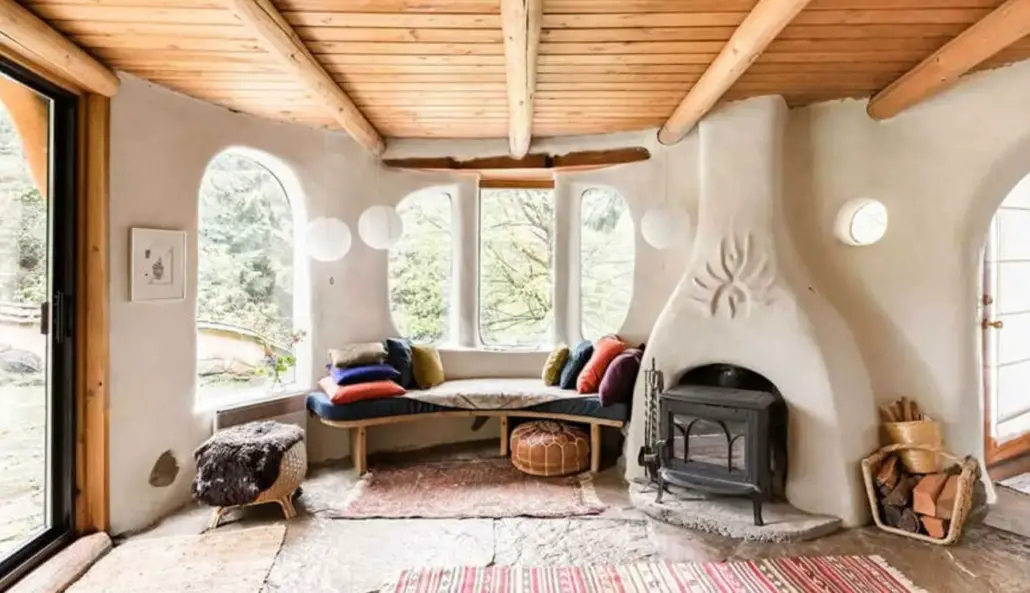
Pros:
- Better durability
- They last longer
- Walls can be load-bearing
- Fire-proof
- Perform better in wet conditions
- Good thermal mass
Cons:
- Longer construction
- Not ideal for colder areas
- Acquiring permits can be difficult
- Construction could get expensive
Hybrid Straw & Cob Pros & Cons
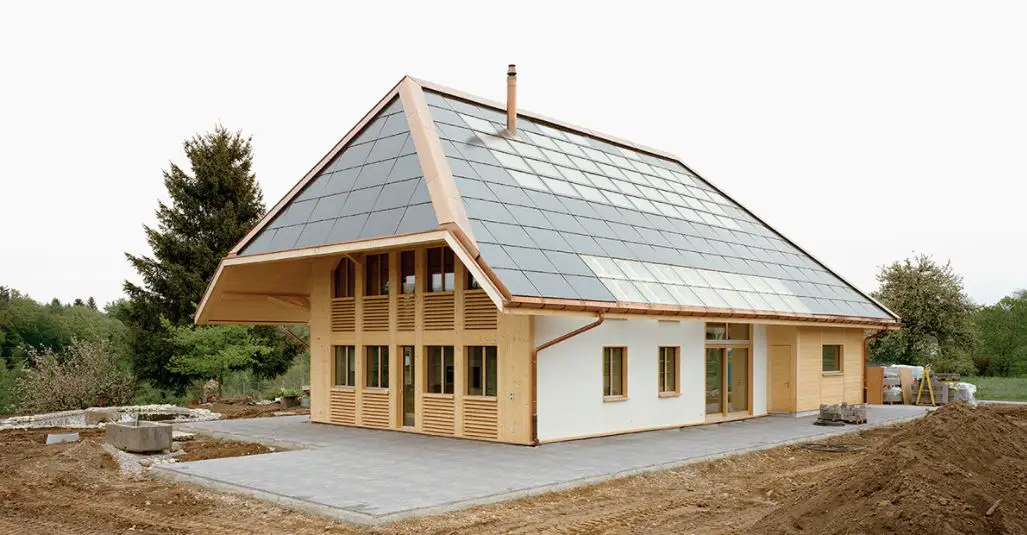
Pros:
- Good insulation
- Quicker to build
- Sturdier foundation
- Earthquake resistant
Cons:
- It could be hard to find a contractor
- More materials required
Which One Is More Expensive?
Cob construction tends to be more expensive because of the labor costs.
While the construction itself may not be complicated, the time to cure the house as layers are added could run up your invoice if you are working with a contractor.
Which Takes Longer To Build?
There are many factors that play a part in building both of these kinds of houses.
However, if you’re talking about basic construction, a cob house will inherently take longer to build because of the curing process.
Which One Lasts Longer?
Cob houses tend to last longer.
While some cob houses currently in existence have been around for nearly 1,000 years, straw bale homes typically last for about 100 years.
Which Climate Suits Each Type?
Straw is a dry, organic substance that is prone to rotting unless it is treated or protected with a layer of stucco.
Straw houses do best in dry, arid climates. Cob homes insulate heat well but won’t protect you against the cold if you don’t get a lot of sun during the day.
This is why they are also congenial for warmer climates.
Which One Will be Warmer
While straw bale has a good insulation value, you will get better heat insulation from a cob-constructed house.
Which Is More Durable?
Cob is a naturally denser material. While straw can be incorporated into the cob material, the sand and earth make it more tightly packed.
This makes it generally more durable than straw bales which can only be compressed so tightly.
Cob is also holds up better in wet conditions and is not combustible the way that straw is.
Do Straw Bales Attract Mice?
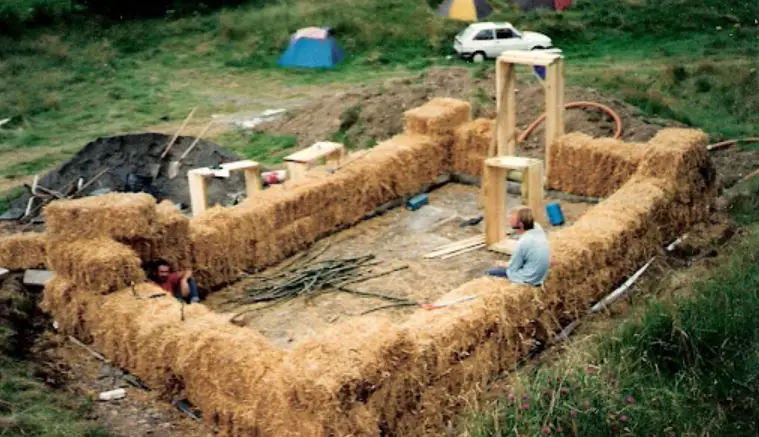
One of the biggest pitfalls of straw barrel homes is rodent infestations.
Straw bales make a perfect home for rodents and other pests. While you can treat your straw bales and even stucco them to help keep the rodents out, this will add to your construction costs.
Even if rodents don’t make their homes in your straw bale walls, they could cause damage to them by gnawing and eating away at them.
Can You Drill Into Cob?
In some cases, yes. Wooden hangers can be screwed into cob walls as long as what hangs on them isn’t too heavy.
Things like coat hangers and small frames can be reasonably hung on a cob wall. For heavier things however, you will need to implant a wooden framing into the cob wall.
Final Assessment
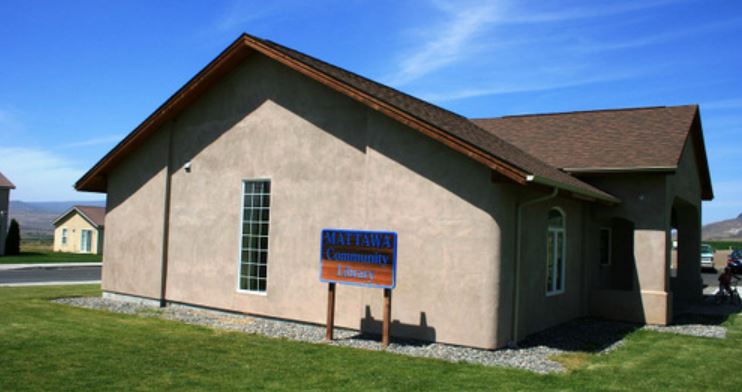
So which is the better material to build a house?
Well, it really depends on your preferences and where you plan to build it. Both types of houses are better suited fro dryer, warmer climates.
In the end though, if you are looking to build a home you can pass down to your kids, cob would be your best option. While straw bale may be less expensive and easier to build with, it can’t provide the longevity that you may be after.


